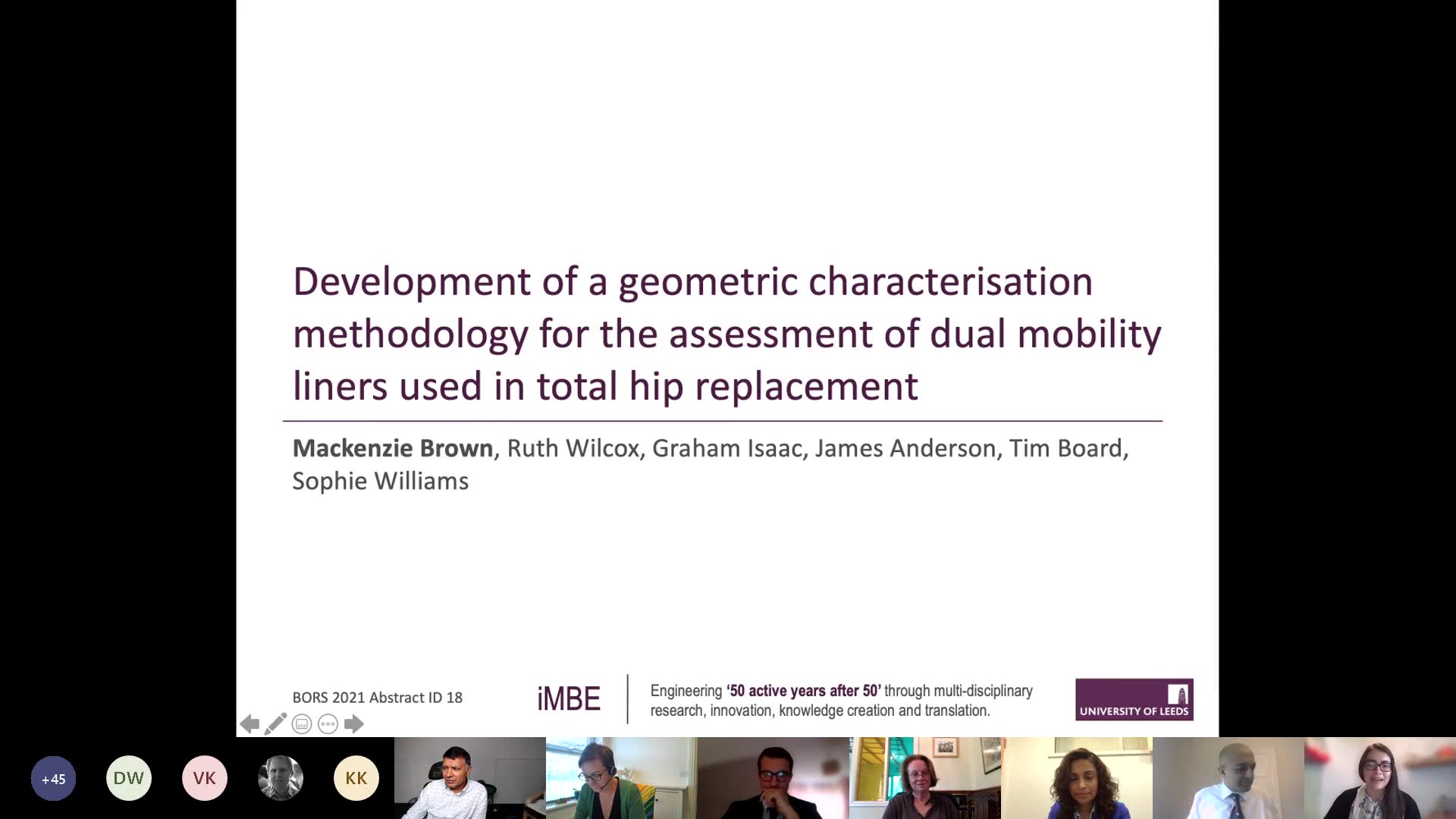Please login to view this media

- Talk
- 13/09/2021
- UK
Development of a Geometric Characterisation Methodology for the Assessment of Dual Mobility Liners Used in Total Hip Replacement
Description
The presentation begins with Mackenzie introducing herself and the topic, which focuses on a geometric characterization method for dual mobility liners in hip replacements. She explains the concept of dual mobility bearings and how they differ from conventional hip replacements, emphasizing their unique articulation and mobility features that include two surfaces of contact: one between the femoral head and the liner, and another between the liner and the acetabular shell.
Mackenzie outlines the current challenges in understanding the functional failure of these bearings due to the lack of effective characterization methods. Her study aims to develop a novel approach to assess the liner's articulating surfaces through geometric means, utilizing a coordinate measuring machine to create a point cloud of the surface.
The process involves analyzing the data with a custom MATLAB script to determine an unworn reference geometry using sphere-fitting algorithms. The geometric variance for each point is calculated and visualized through heat maps, which depict areas of penetration and protrusion after testing.
Mackenzie presents data on the repeatability of this characterization method, which shows consistent results across multiple tests with minimal variation. She explains a verification study that successfully identified variations in surface geometry, highlighting the method's sensitivity to even minor changes.
In conclusion, she asserts the efficacy of this geometric assessment method for analyzing retrieved and tested liners, contributing to improved understanding of their functional dynamics and potential design advancements. However, she notes a limitation in the method's ability to precisely identify localized deformation. Mackenzie finishes by inviting questions from the audience.